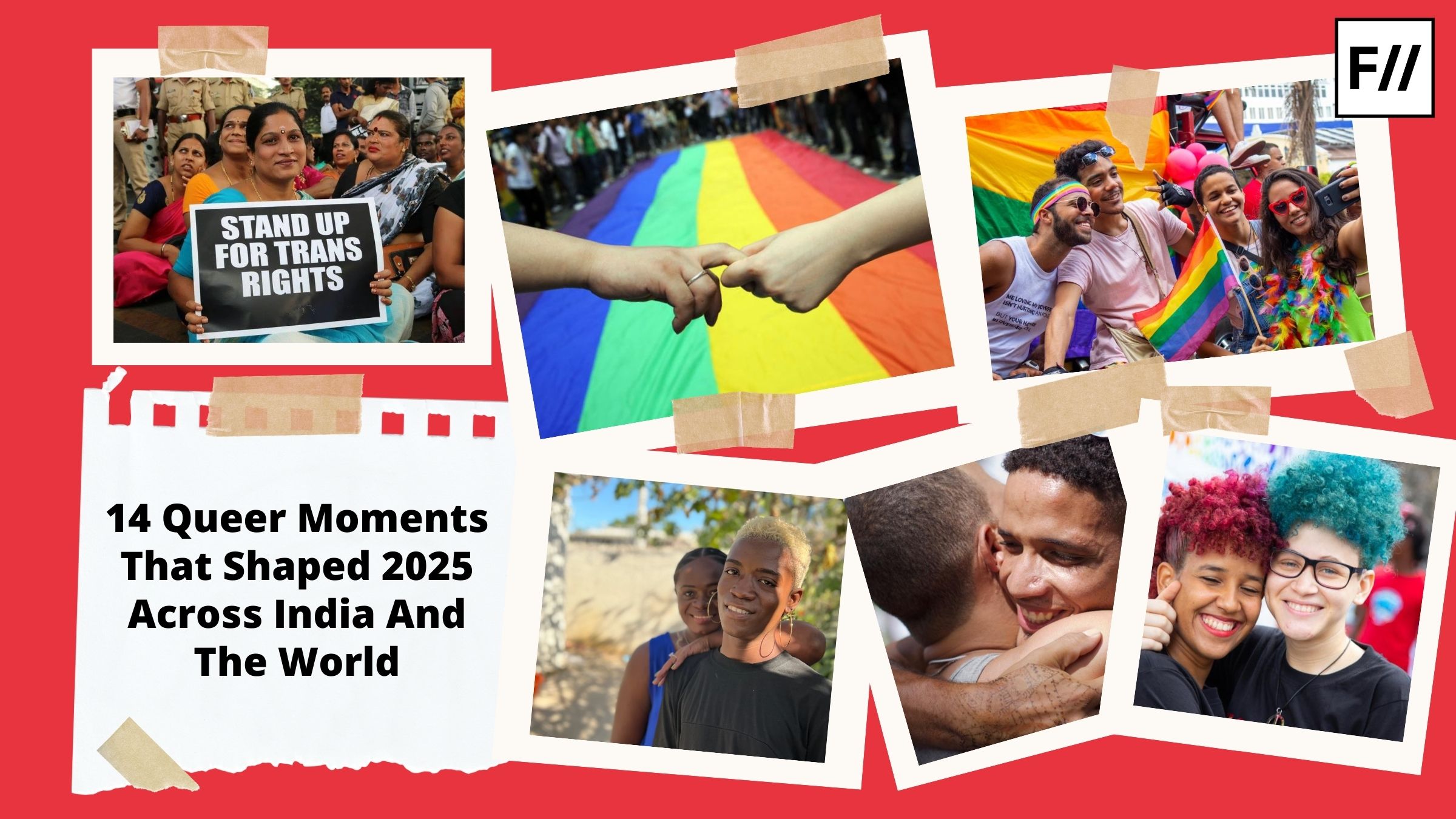Trigger Warning: Mention of death by suicide, sexual abuse and self-harm
‘My family is deeply religious and, to a great extent, superstitious. My mother started religious activities for my cure after they learned about my sexuality. I agreed to do everything because I wanted my family to be satisfied. Later, she asked a family acquaintance for a cure, and he suggested a method where he would examine me, ensuring we were alone in a room. He would ask me to get an erection and keep touching me throughout. The sexual abuse continued for years until I refused to spend a night alone with this person,’ said Mrinal, a 33-year-old queer, gender fluid individual from Himachal Pradesh.
In September 2022, the National Medical Commission (NMC) prohibited ‘conversion therapy‘ and listed it as ‘professional misconduct‘. The NMC also issued a letter to all State Medical Councils, authorising them to initiate disciplinary action against medical practitioners who administer this type of therapy. But conversion therapy is still practised illegally in hospitals, de-addiction, rehab and religious centres, amongst many other places in India.
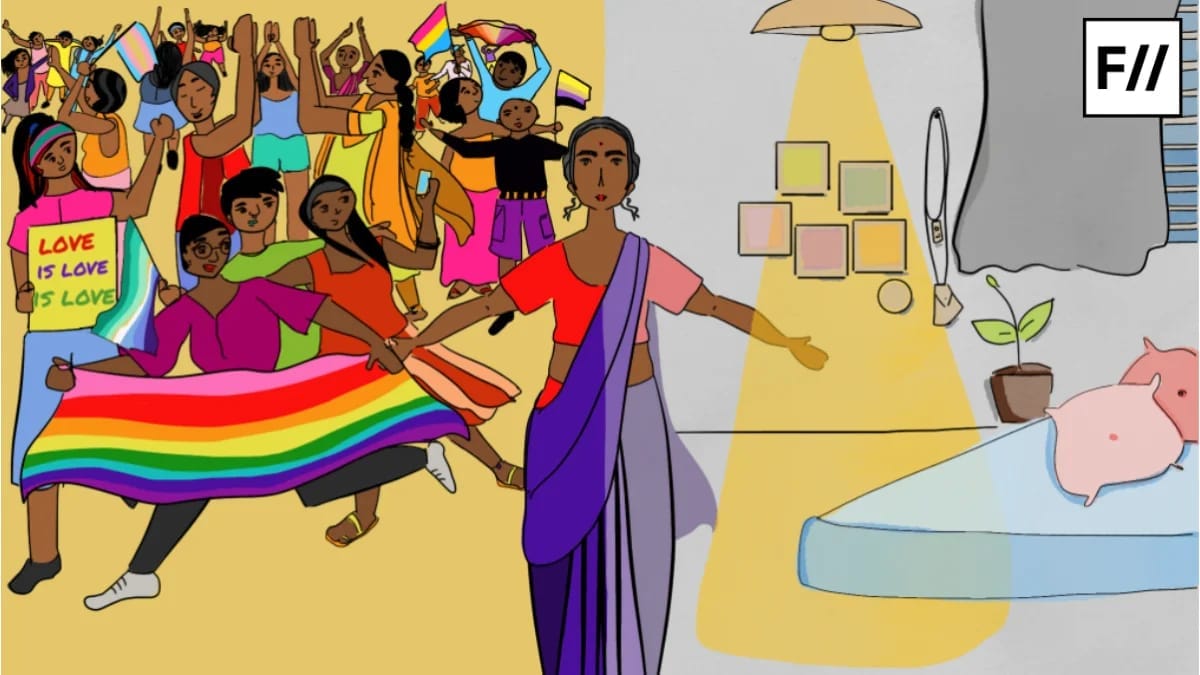
As per the LGBT Foundation‘s evidence brief of 2019, conversion therapy continues to be pledged as a cure, promoted as a necessity and administered by state actors, private institutions, medical professionals, religious organisations and traditional healers. Sharing an experience on conversion therapy, LGBTQ+ activist and the world’s first openly gay prince Manvendra Singh Gohil said, ‘In 2002, I was hospitalised. During the hospitalisation process, I came out to my psychiatrist. The psychiatrist helped me to come out to my parents because he felt it was normal and natural to be gay. But my parents never accepted me. They thought it was a mental disorder, and they needed to consult other psychiatrists and possibly India is not the right place for it. The people associated with my parents gave them suggestions to operate on my brain and do electroshock therapy for my cure, which would make me straight.‘
Conversion in the name of love, faith and religion
India’s attitude towards the queer community remains far from progressive despite the decriminalisation of homosexuality in 2018. But it is also closely associated with caste, class, religion and geographic location of the person. A 21-year-old student in Kerala died by suicide in 2020, after she was compelled to undergo conversion therapy by her family for months, following her coming out as bisexual. In a Facebook clip, she alleged that she was being coercively made to undergo conversion therapy in Christian community-issued de-addiction and mental wellness centres, and heavy medication was being administered to her.
Sharing experiences of how religious practices were used for his cure, Prince Manvendra said, ‘My parents reached out to doctors in the United States and Canada. But in 1978, the American Psychological Association had already stated that homosexuality is not a mental disorder. Therefore, the doctors declined. Since a medical conversion was not possible, they turned towards a religious conversion. I was told to be a vegetarian, practice yoga, visit mandirs, write Ram, among many other such practices, from the year 2005-2008. I was also publicly beaten up and humiliated by the local priest for the ‘cure’. It was traumatic for me. I was deeply affected. I understood that even if I came from a privileged background, I was at the receiving end. I realised I need to work for the people who don’t have privileges and face challenges due to conversion therapy.’
Mental health challenges faced by the survivors
According to a report published in The Guardian, contrary to the popular belief that being ‘queer’ is a mental disorder and needs ‘cure’, attempts to change a person’s sexual orientation result in high levels of mental health problems, including death by suicide attempts, self-harm and eating disorders. ‘I am bipolar and also got depressed with the series of events. I was suicidal. I tried committing suicide three times. I also got into major substance abuse. I felt it was the only way to cope. However, eventually, I started my journey with a psychiatrist and psychotherapist and am happy that today I am out of it. For the first 30 years of my life, I did everything in my power to not exist,‘ said Mrinal on how it affected his mental health.
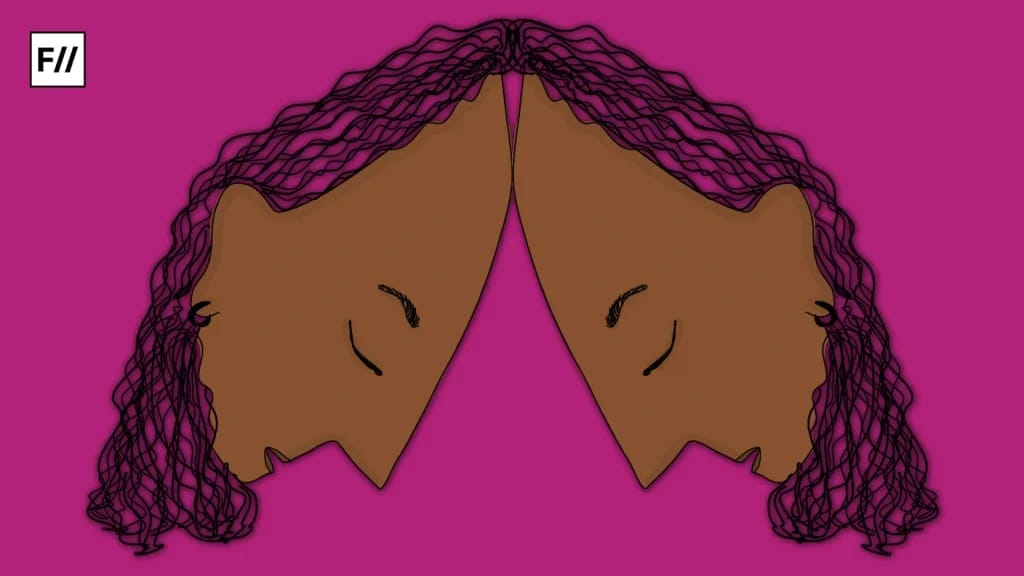
Decriminalising homosexuality was just one step towards achieving equality and social acceptance in India. But the practice of conversion therapy remains even after being denounced by global institutions such as the American Psychological Association and the Indian Psychiatric Society.
Sharing their experiences and speaking about rehabilitation centres that conduct such therapies, Koyel Ghosh, an activist, queer educator, and Managing Trustee of Sappho For Equality, a rights-based organisation based in Kolkata, expressed, ‘We receive many cases of conversion therapy. A transmasculine person reached out to us who was subjected to conversion therapy. When his family found out that he considered himself a ‘man’ and not a ‘woman’, they sent him to a rehabilitation centre, where he faced severe mental and physical harassment, losing two years of his life. He was forced into the de-addiction facility despite never having any addiction. He was forced to wear women’s clothing and paraded around the campus. He was also forced to strip naked and walk around the campus under the pretext of imbuing femininity within him. Since there is nothing wrong with being queer, it affects the mental health of the person when they are allegedly cured.‘
Conversion therapy is a complicated issue because most often individuals, because of family association or emotional coercion, in a trusting state, visit such facilities or consent to undergo such therapy or such procedures which are allegedly used for a cure.
Conversion therapy is a complicated issue because most often individuals, because of family association or emotional coercion, in a trusting state, visit such facilities or consent to undergo such therapy or such procedures which are allegedly used for a cure. ‘I have known since childhood that I am a woman. But my family didn’t want to accept it. I was taken to an endocrinologist, where I was physically checked, which made me feel very uncomfortable and later to a psychologist in a mental asylum. She tried to convince me that I am not a woman. This continued for almost a month. Since my mother expected me to be different and realised that my identity can’t be changed, she went into severe depression,’ says Maya (name changed), a Mumbai-based trans woman.
Therapy in the name of conversion is not only a violation of rights; it also affects one’s confidence and can traumatise the person for the rest of their life. Sharing her experience, Maya said, ‘Coming from a family of an inter caste marriage and a history of domestic violence, the series of events made me vulnerable and I got into depression and took a lot of time to recover.’
Why is conversion therapy practised?
The LGBT Foundation surveyed 8092 individuals from over 100 countries between less of 18 to 85+ years of age. The study shows that worldwide, people are not entirely unaware of conversion therapy; they are aware of its existence. A UN Human Rights Council (UNHRC) survey found that 4 out of every 5 people were 24 years of age or younger at the time they were subjected to conversion therapy, and of those, roughly half were under 18 years of age. It is also our Brahmanical patriarchal society’s heteronormative culture, where we tend to seek a cure for people who fall out of gender binaries.
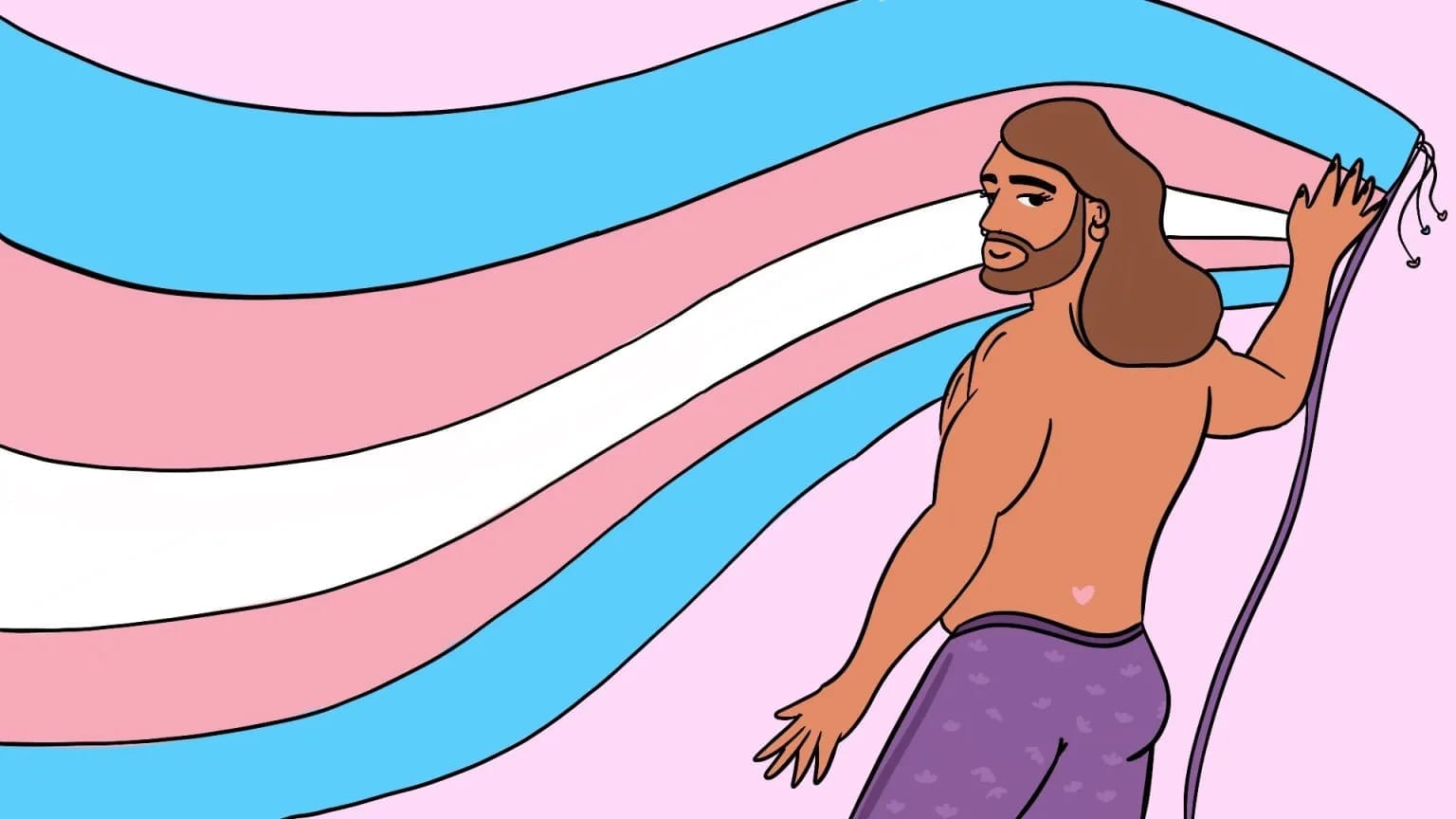
Education, awareness and acceptance are often pledged as solutions to it. However, many activists disagree with it. ‘It’s more about believing something because you firmly believe that sexual orientation and gender identity are issues, if it is not heteronormative. It is more about that than a lack of awareness. Even if you make people aware, they are not ready to accept homosexuality because the heteronormative systems are the ones that force them to think that this should be cured. Otherwise, it’s a bad name for the family. The firmness comes from the fact that people really have not changed their thinking about the non-heteronormative patterns of living, which needs to be established even more. We have consistently worked on it to the extent that at least the laws have changed. But to get to the root of the public systems and people’s belief systems that this is not wrong, it takes time,‘ said Bangalore-based gender rights activist Rumi Harish.
In India, queer persons are still not widely accepted by families and society at large, even with growing awareness and legal strides like the decriminalisation of homosexuality. Coming out is the first small step, which still means rejection, emotional abuse, or even physical violence from their own families or close ones. Social stigma, founded on strict gender roles and heteronormative assumptions, isolates queer individuals, impacting their mental well-being.
Speaking about the deep-rooted causes behind the persistence of conversion therapy, Mrinal reflected on the systemic nature of the problem. ‘I’m not even sure who to hold responsible for this. Should I blame the heteronormative system, the patriarchal structure, or our entire societal framework? I feel it’s not fair to solely blame families either. In many ways, everyone plays a part, from schools to organisations to civil society as a whole,’ he added. Darshan Mandhana, a gender fluid individual from Mumbai and winner of Mr Gay World India 2017, also feels acceptance within your families is a greater concern than society.
Why is a ban not enough: the importance of queer affirmative healthcare
The Madras High Court, in its landmark judgement in 2021, banned the practice of ‘conversion therapy’, bringing protective measures for LGBTQIA+ individuals in the country. The LGBTQ+ population in India is very diverse, with people from various castes, classes and socio-economic conditions. The intersection of caste, class and sexual identities may also add to a layer of complexities to the plight of queer people. For instance, the experiences of a Dalit queer person living in rural India may differ from the experiences of an upper caste queer person living in a metropolitan city. Often, people’s lives are also governed by the prejudices, beliefs and stereotypes, especially ingrained in their religion.
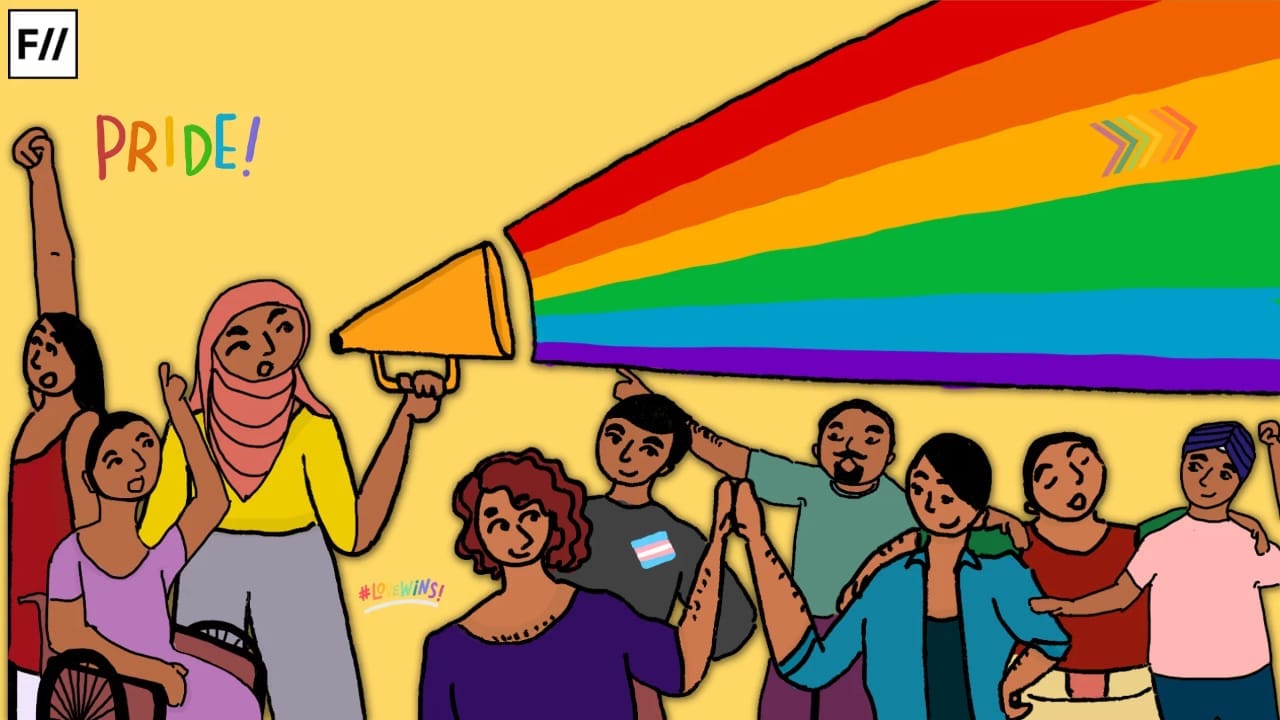
However, even with such diversity, queer people also have similar challenges. These include discrimination and stigma, absence of legal protection, bullying, healthcare disparities, lack of queer affirmative mental healthcare, hate crimes and family rejections after coming out. ‘In such cases of conversion, caste and geographical location play a significant role. When a person comes from an area with limited exposure and believes they are the only one with such an identity, their difficulties and challenges increase even further. This often leads to feelings of internalised shame. The entire village may unite in an attempt to cure them. The individual is perceived as a source of shame for the whole village or society,’ added Koyel.
Queer-affirmative mental health care is essential in that it validates and acknowledges sexual orientations and gender identities that exist outside heteronormative conceptualisations.
Queer-affirmative mental health care is essential in that it validates and acknowledges sexual orientations and gender identities that exist outside heteronormative conceptualisations. We are also socially conditioned to be heterosexual, which sees being queer as a problem. Talking about mental health challenges, Aryan Somaiya, a psychotherapist and the co-founder of Guftagu Therapy, said, ‘As a therapist is in some ways powerful enough to persuade individuals, it becomes even more necessary that we have quality queer affirmative mental healthcare available. Patriarchy is a social evil for everyone, irrespective of whether we are homosexual or heterosexual. It is also a challenge for the therapist to liberate themselves from their prejudices and biases and provide affirmative mental healthcare to everyone. Both heterosexual and homosexual societies have the same system of operations; hence, we must work as a society rather than working in separate groups.‘
Legalities of practising ‘conversion therapy’
The Conversion Therapy (Prohibition) Bill, 2022 defines terms such as gender identity, gender expression, sexual orientation, and vulnerable persons and harmonises with constitutional and international human rights principles. But, a mere ban on it isn’t helping the queer community, essentially because it has only banned the practice of conversion therapy as a medical practice, but not criminalised the act of professing or practising the same. It has no penal provisions, and the practitioners of the conversion therapy are heard only on the ground of professional misconduct, which is subject to a maximum penalty of being removed from the list of the National Health Commission.
Forcing conversion therapy is punishable under Section 321 of the Indian Penal Code (IPC). Professionals administering conversion therapy are punishable under Section 322 of the IPC. If guilty, these can lead to imprisonment from 2 to 5 years and fines up to ₹10 lakh. Talking about the legal repercussions, Delhi-based Supreme Court lawyer and transwoman Raghavi says, ‘There is no particular statute which defines conversion therapy and then talks about what constitutes conversion therapy or if there are any degrees of conversion therapy. For example, there can be aggravated forms of conversion therapy, like using shock therapy. The Medical Council has control over the health practitioners, but not spiritual and religious gurus who claim that they can convert queer people. There is a lack of definition, and there is also no recourse that is available other than approaching the court and the police within the limited penal provisions that we have.’
‘It can be hurt or it can be grievous hurt under the IPC, or different forms of violence can be covered, but to have a comprehensive law that clearly defines conversion therapy helps in assessing why that violence was inflicted and provides remedial measures. Such a law should align with existing penal provisions, creating a complete legal framework that individuals can use to seek justice in cases of conversion therapy. This is important because the Transgender Persons (Protection of Rights) Act does not currently address this matter,’ she added.

Countries like Canada and Albania have made conversion therapy illegal through legislation. Nine nations have tabled bills regarding the same. Brazil, Ecuador and Malta have a country-wide ban already implemented against it. Conversion therapy increases the stigma surrounding homosexuality and adds to the discrimination that queer individuals are already facing in the country. The existence of conversion therapy in India, despite legal bans and medical disapproval, is a reflection of ingrained social prejudices rooted in patriarchy, caste, religion, and heteronormativity.
Legal reforms, no matter how necessary, are not adequate without aggressive enforcement, clear definitions, and penal sanctions. This harmful practice must be tackled through multi-faceted intervention by strengthening legislation, making queer-affirming healthcare cheap and accessible, education, and dismantling the belief system that sees non-heteronormative identities as problems to be ‘cured’. Every individual can only realise equality when queer individuals are loved without hesitation, can live with dignity, and are free from any human rights violations.
This article has been published under the Laadli Media Fellowship 2025. The opinions and views expressed are those of the author. Laadli and UNFPA do not necessarily endorse the views.


